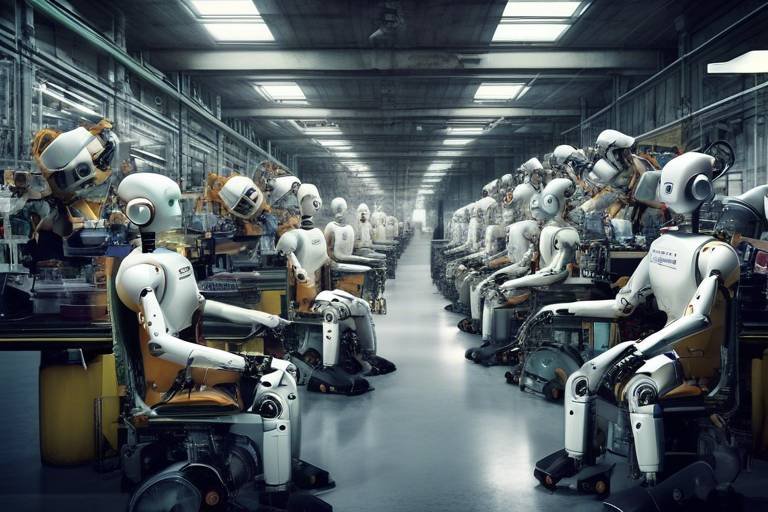How Robotics Will Influence Disaster Response Strategies
In the face of natural disasters, time is often the most critical factor. The quicker responders can assess the situation, locate victims, and deliver aid, the better the outcomes for those affected. Enter robotics—a game changer in the realm of emergency management. Robotics technology is not just a futuristic concept; it is a reality that is reshaping disaster response strategies today. Imagine a world where drones soar through smoke-filled skies, ground robots navigate treacherous debris, and underwater vehicles explore submerged areas—all working tirelessly to save lives. This article explores the transformative role of robotics in enhancing disaster response strategies, focusing on their capabilities, applications, and the future implications for emergency management.
The journey of robotics in disaster response is fascinating and full of milestones that have paved the way for today’s advanced technologies. From the early days of simple remote-controlled devices to the sophisticated autonomous systems we see now, robotics has come a long way. Initially, robots were primarily used in military applications, but as technology advanced, their potential for civilian use became apparent. For example, the 9/11 attacks marked a significant turning point, showcasing how robotics could assist in rescue operations. Over the years, various organizations, including NASA and the military, have invested in developing robots specifically designed for disaster scenarios. This evolution reflects a growing recognition of the importance of integrating robotics into emergency management, leading to enhanced capabilities and improved outcomes.
When it comes to disaster response, different types of robots serve unique purposes, each contributing to effective operations in their own way. Here’s a look at some of the most commonly used robotic systems:
- Drones: Aerial vehicles that provide real-time data and surveillance.
- Ground Robots: Capable of navigating hazardous terrains to assess damage and deliver supplies.
- Underwater Vehicles: Explore submerged areas and assist in search and recovery operations.
These robotic systems not only enhance situational awareness but also significantly reduce the risks faced by human responders in dangerous environments.
Drones have revolutionized search and rescue operations, offering capabilities that traditional methods simply cannot match. With their ability to cover vast areas quickly, drones equipped with advanced sensors can locate and rescue victims in record time. Imagine a drone hovering above a disaster site, capturing high-resolution images and transmitting real-time data back to command centers. This rapid deployment capability is crucial in emergencies where every second counts.
One of the most impressive features of modern drones is their thermal imaging technology. These drones can detect body heat, making them invaluable in locating survivors in challenging environments, such as collapsed buildings or dense forests. By identifying heat signatures, responders can pinpoint where to focus their search efforts, significantly improving the chances of finding individuals who may be trapped or in distress.
Moreover, drones play a vital role in creating detailed maps of disaster-affected areas. By utilizing mapping and assessment tools, they provide responders with a clearer picture of the landscape, highlighting damaged infrastructure and identifying safe routes for rescue efforts. This enhanced situational awareness is essential for effective resource allocation and operational planning.
Ground robots are another critical component of disaster response. These machines are designed to navigate hazardous situations, such as debris-laden environments, where human responders might be at risk. Equipped with sensors and cameras, they can assess structural integrity, detect gas leaks, and even deliver supplies to areas that are otherwise inaccessible. Imagine a ground robot maneuvering through rubble, collecting data, and sending it back to human operators who can make informed decisions based on the information gathered.
Despite the remarkable advancements in robotics, several challenges hinder their full integration into disaster response strategies. Understanding these obstacles is crucial for future development and implementation.
One of the primary challenges is technical limitations. For instance, battery life remains a significant concern; many robots can only operate for limited periods before needing recharging. Additionally, communication issues can arise in disaster scenarios where traditional networks are down, complicating coordination efforts. Furthermore, robots must be adaptable to different environments, which can be problematic in chaotic disaster zones.
Another critical aspect to consider is the regulatory and ethical implications of using robots in disaster response. Privacy concerns, liability issues, and the need for clear operational guidelines are just a few of the topics that need to be addressed. As we integrate more robotics into emergency management, it’s essential to ensure that these technologies are used responsibly and ethically.
Looking ahead, the future of robotics in disaster management is bright. With ongoing advancements in technology, we can expect to see increased automation and the integration of artificial intelligence (AI) to enhance robotic capabilities. Imagine robots that can learn from their environments and adapt their responses based on real-time data. This level of sophistication could lead to smarter decision-making and improved efficiency in operations.
AI and machine learning will play a crucial role in enhancing robotic capabilities in disaster response. These technologies will enable robots to analyze data, recognize patterns, and make informed decisions autonomously. This means faster response times and more effective strategies for locating and assisting victims.
Moreover, the potential for collaborative robots, or cobots, to work alongside human responders could redefine disaster management. By improving safety and efficiency, cobots can take on dangerous tasks, allowing human responders to focus on critical decision-making and emotional support for victims. This collaboration could lead to a more effective and compassionate approach to disaster response.
Q: How are drones used in disaster response?
A: Drones are used for aerial surveillance, real-time data collection, and locating victims through thermal imaging technology.
Q: What are the main challenges in using robotics for disaster response?
A: Key challenges include technical limitations like battery life and communication issues, as well as regulatory and ethical considerations.
Q: What is the future of robotics in disaster management?
A: The future includes increased automation, AI integration, and collaborative robotics to enhance efficiency and safety in disaster response.
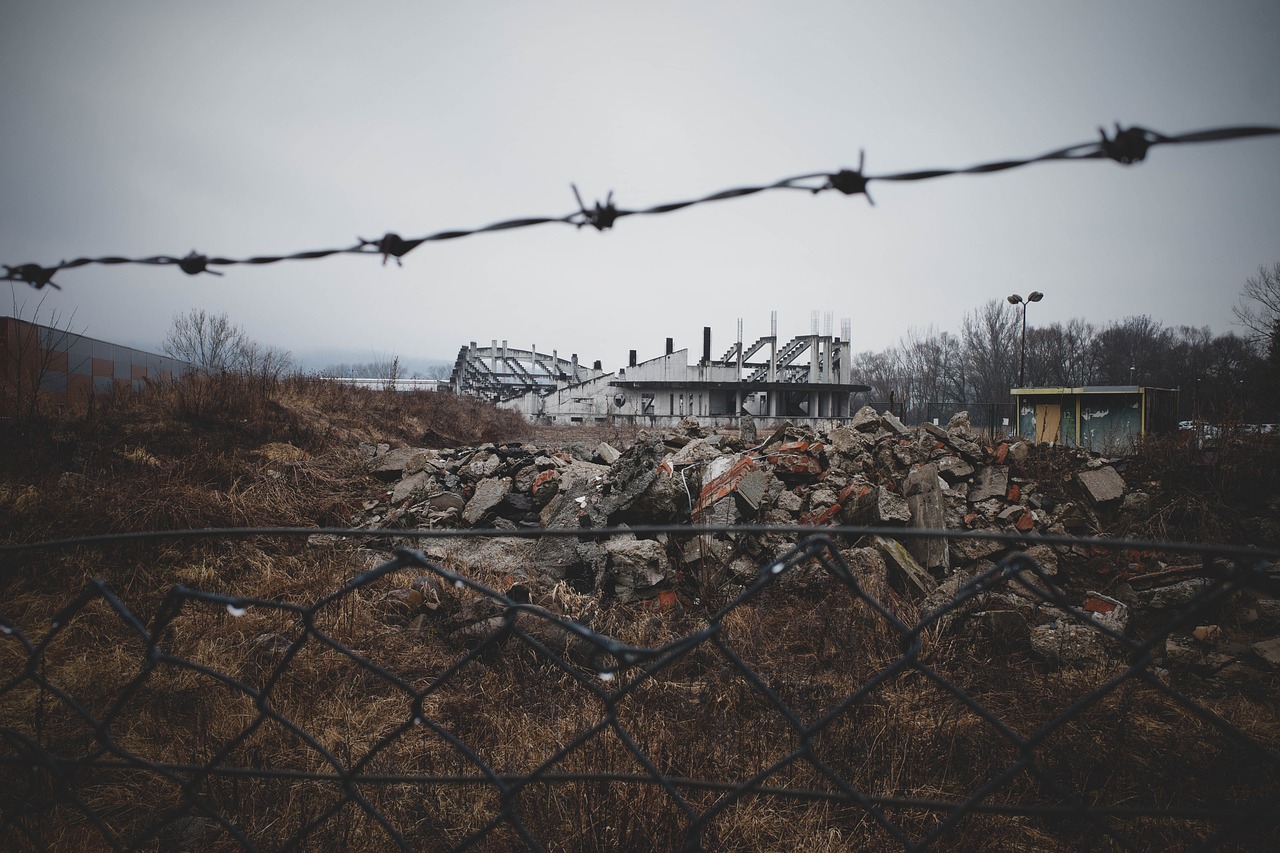
The Evolution of Robotics in Disaster Response
The journey of robotics in disaster response is nothing short of fascinating. It’s a tale of innovation, resilience, and the relentless pursuit of saving lives. From the early days of rudimentary machines to today’s sophisticated robotic systems, the evolution has been marked by significant milestones that have drastically changed how we respond to emergencies. In the past, disaster response relied heavily on human effort, often putting first responders in harm's way. However, as technology advanced, the integration of robotics began to gain traction, offering safer and more efficient alternatives.
One of the key milestones in this evolution was the development of remote-controlled robots in the late 20th century. These early machines were primarily used in military operations, but their potential for civil applications quickly became apparent. For instance, during the aftermath of the 9/11 attacks, robotic systems were deployed to search for survivors in the rubble of the World Trade Center. This marked a turning point, demonstrating how robotics could enhance human efforts in disaster scenarios.
As we moved into the 21st century, technological advancements accelerated the capabilities of robots. The introduction of autonomous systems allowed robots to operate with minimal human intervention. This was particularly beneficial in hazardous environments where human presence posed significant risks. For example, in the wake of natural disasters like earthquakes and tsunamis, robots equipped with sensors and cameras could navigate treacherous terrains, gathering crucial data without endangering lives.
Moreover, the proliferation of drone technology has revolutionized disaster response. Drones can swiftly survey large areas from the sky, providing real-time data that is invaluable for situational assessment. Their ability to reach inaccessible regions makes them an essential tool for rescuers. The evolution of drones has been rapid, with improvements in battery life, payload capacity, and imaging technology, enabling them to perform complex tasks such as delivering supplies or mapping disaster zones.
To further illustrate this evolution, consider the following table highlighting some major developments in robotics for disaster response:
| Year | Development | Impact |
|---|---|---|
| 2001 | Deployment of robots in the 9/11 aftermath | Showcased the potential of robotics in urban disaster scenarios |
| 2010 | Introduction of autonomous drones | Enhanced aerial surveillance and data collection |
| 2015 | Development of ground robots for hazardous environments | Improved safety for first responders |
| 2020 | Integration of AI in robotic systems | Enabled smarter decision-making and operational efficiency |
As we look to the future, the evolution of robotics in disaster response is poised to continue. With advancements in artificial intelligence, machine learning, and collaborative robotics, we can expect even more innovative solutions that will enhance our ability to respond to disasters effectively. It’s not just about having robots on the ground or in the air; it’s about creating a seamless integration of human and robotic efforts that maximizes our response capabilities while minimizing risks. The journey is far from over, and the next chapter promises to be even more exciting.
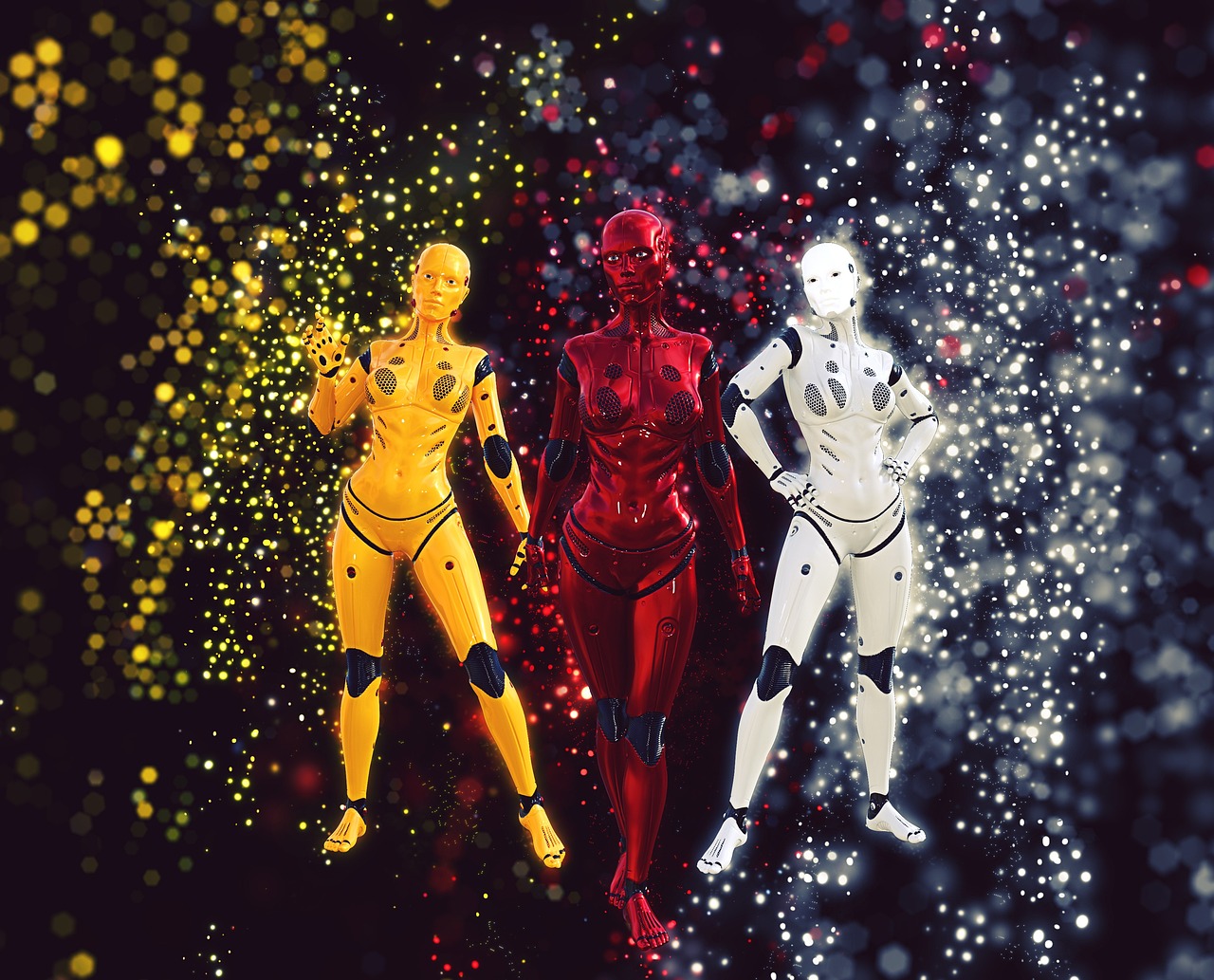
Types of Robots Used in Disaster Scenarios
When it comes to disaster response, the integration of robotics has revolutionized the way we approach emergencies. Various types of robots have emerged, each tailored to tackle specific challenges presented by different disaster scenarios. These robotic systems not only enhance the efficiency of rescue operations but also offer capabilities that human responders may find difficult or impossible to achieve. Let’s explore the different types of robots that are making a significant impact in disaster situations.
One of the most recognized forms of robotic assistance comes in the shape of drones. These flying robots have gained immense popularity due to their ability to cover large areas quickly and provide real-time data. Drones are equipped with advanced sensors and cameras, allowing them to perform aerial surveillance, assess damage, and even locate survivors in hard-to-reach areas. Imagine a drone soaring over a disaster zone, capturing high-resolution images that help responders understand the extent of destruction and strategize their efforts. Their versatility makes them invaluable in various scenarios, from earthquakes to floods.
Alongside drones, ground robots have also carved out a niche in disaster response. These robots are designed to navigate through debris and hazardous environments that may pose risks to human life. Equipped with sensors, cameras, and sometimes even robotic arms, they can assess structural integrity and deliver essential supplies to those in need. For instance, in the aftermath of a building collapse, a ground robot can maneuver through the wreckage, providing real-time information about trapped individuals and assessing the stability of the remaining structure. This capability not only aids in rescue efforts but also ensures the safety of human responders.
Furthermore, we cannot overlook the importance of underwater robots, or remotely operated vehicles (ROVs), especially in scenarios involving floods or maritime disasters. These robots can dive beneath the surface to inspect submerged structures, search for victims, or even assist in hazardous material recovery. Their ability to operate in environments where humans cannot safely venture opens up new avenues for effective disaster management. Imagine the potential of an underwater robot exploring the depths of a flooded area, relaying vital information back to command centers.
To summarize, here’s a quick overview of the types of robots commonly used in disaster scenarios:
| Type of Robot | Functionality | Key Advantages |
|---|---|---|
| Drones | Aerial surveillance, data collection | Rapid deployment, extensive coverage |
| Ground Robots | Navigation through debris, supply delivery | Safety for human responders, structural assessment |
| Underwater Robots (ROVs) | Inspection in flooded areas, victim search | Access to submerged locations, hazard recovery |
As we can see, the diverse capabilities of these robotic systems provide critical support in disaster scenarios. Each type of robot plays a unique role, ensuring that emergency responders can effectively tackle the challenges they face. The collaboration between humans and robots not only enhances operational efficiency but also increases the likelihood of saving lives and minimizing the impact of disasters.
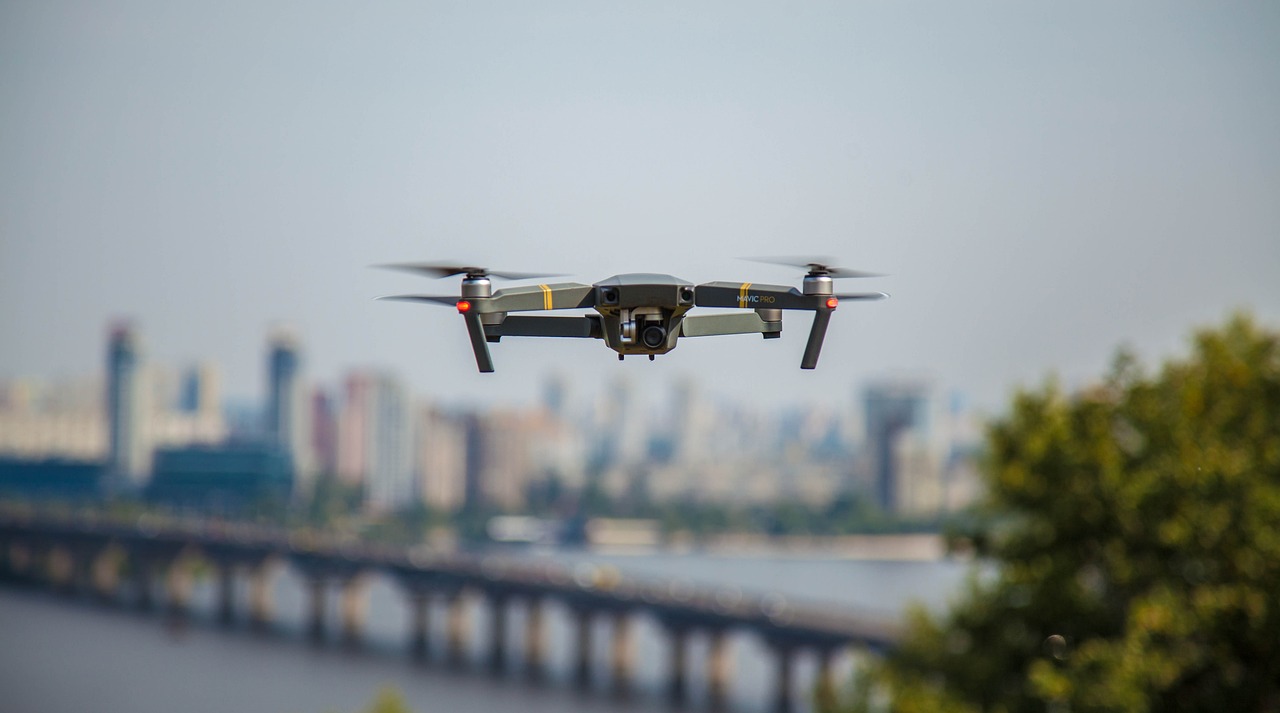
Drones in Search and Rescue Operations
Drones have emerged as a revolutionary tool in the realm of search and rescue operations, transforming how first responders approach disaster scenarios. Imagine a situation where a natural disaster has struck, and time is of the essence. Drones can be deployed quickly, soaring above the chaos, providing a bird's-eye view of the affected area. This aerial perspective is not just advantageous; it’s often a game-changer. With their ability to cover large areas in a fraction of the time it would take traditional ground teams, drones significantly enhance the chances of locating survivors.
One of the standout features of drones in these operations is their real-time data collection. Equipped with high-definition cameras and sensors, drones can transmit live video feeds back to command centers, allowing responders to assess the situation as it unfolds. This capability is crucial for making informed decisions about where to direct resources and personnel. For instance, if a drone identifies a cluster of people in distress, rescue teams can be dispatched immediately to that location, rather than searching blindly.
Additionally, drones can be fitted with thermal imaging technology, which is particularly useful in low-visibility conditions such as smoke, fog, or nighttime operations. This technology detects body heat, making it easier to locate individuals who may be trapped under debris or hidden in dense foliage. The ability to see through darkness or obstructions can be the difference between life and death, as it significantly increases the probability of finding survivors in challenging environments.
Beyond just locating victims, drones also play a vital role in mapping and assessment. After a disaster, it’s essential to understand the extent of the damage to allocate resources effectively. Drones can create detailed maps of the affected areas through aerial photography and videography. These maps help responders visualize the landscape, identify hazards, and plan safe routes for ground teams. The data collected can also be integrated into Geographic Information Systems (GIS), providing a comprehensive overview of the disaster's impact.
In summary, the integration of drones into search and rescue operations has not only improved the efficiency of these missions but has also enhanced the overall safety of responders and victims alike. As technology continues to evolve, we can expect even greater advancements in drone capabilities, further solidifying their role as indispensable assets in disaster response strategies.
- How do drones help in locating survivors during disasters?
Drones can cover large areas quickly, providing real-time video feeds and using thermal imaging to detect body heat, which helps locate survivors more efficiently.
- What technology do drones use in search and rescue missions?
Drones are equipped with high-definition cameras, thermal imaging sensors, and GPS technology to enhance their effectiveness in search and rescue operations.
- Can drones operate in adverse weather conditions?
While many drones are designed to withstand various weather conditions, extreme winds, heavy rain, or snow can limit their operational capabilities.
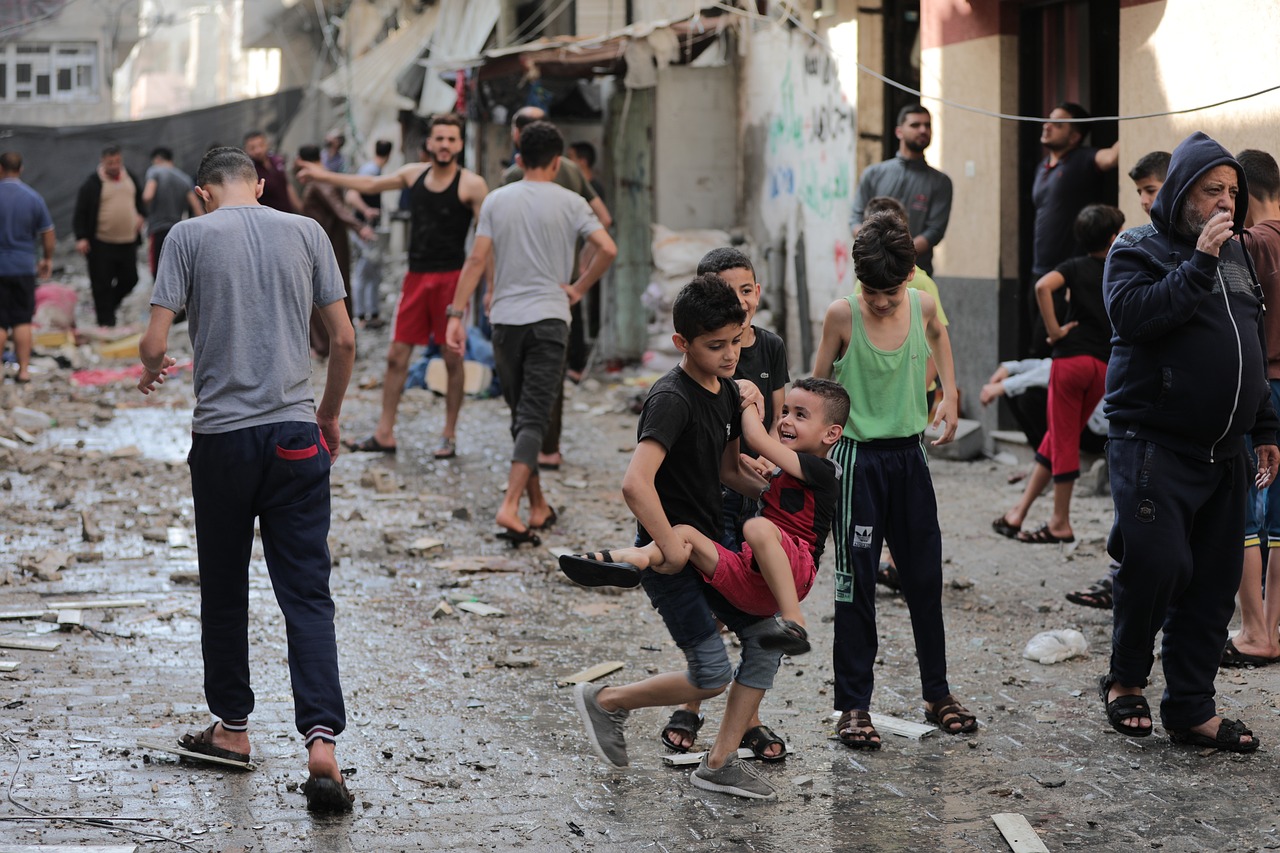
Thermal Imaging Technology
In the chaotic aftermath of a disaster, every second counts, and the ability to locate survivors quickly can mean the difference between life and death. This is where shines, acting like a superhero in the realm of search and rescue operations. By detecting body heat, thermal imaging-equipped drones can penetrate darkness, smoke, and even thick foliage, providing a vital lifeline to rescue teams. Imagine being able to see through the chaos, identifying warm bodies amidst the rubble when traditional methods would fail. This technology transforms the way we approach disaster response.
Thermal imaging works by capturing infrared radiation emitted by objects, converting it into a visible image. This allows responders to identify heat sources that are otherwise invisible to the naked eye. The advantages of utilizing thermal imaging technology in disaster scenarios are numerous:
- Enhanced Visibility: Thermal drones can operate in low-light conditions, making them invaluable during nighttime rescue missions.
- Rapid Deployment: Drones can be deployed quickly, covering large areas in a fraction of the time it would take ground teams.
- Real-Time Data: The capability to transmit live thermal images back to command centers allows for immediate decision-making.
Moreover, the integration of thermal imaging technology with other systems can create a comprehensive response strategy. For instance, when paired with mapping tools, thermal drones can not only locate survivors but also provide crucial data on the overall landscape of a disaster area. This dual functionality can significantly improve situational awareness, enabling rescue teams to allocate resources more effectively.
As we look to the future, the potential of thermal imaging technology in disaster response continues to expand. Innovations such as AI-driven analysis can enhance the interpretation of thermal data, allowing for quicker identification of hotspots and potential survivor locations. This synergy between technology and human effort represents a leap forward in our ability to respond to disasters, saving lives and restoring hope in the most challenging circumstances.
- What is thermal imaging technology?
Thermal imaging technology detects infrared radiation emitted by objects, allowing users to visualize heat differences in the environment.
- How does thermal imaging help in disaster response?
It enables rescuers to locate survivors in challenging conditions, such as darkness or smoke, by identifying body heat.
- Can thermal drones operate at night?
Yes, thermal drones are particularly effective at night, as they do not rely on visible light to function.
- What are the future advancements in thermal imaging technology?
Future advancements may include AI integration for better data analysis and improved real-time decision-making.
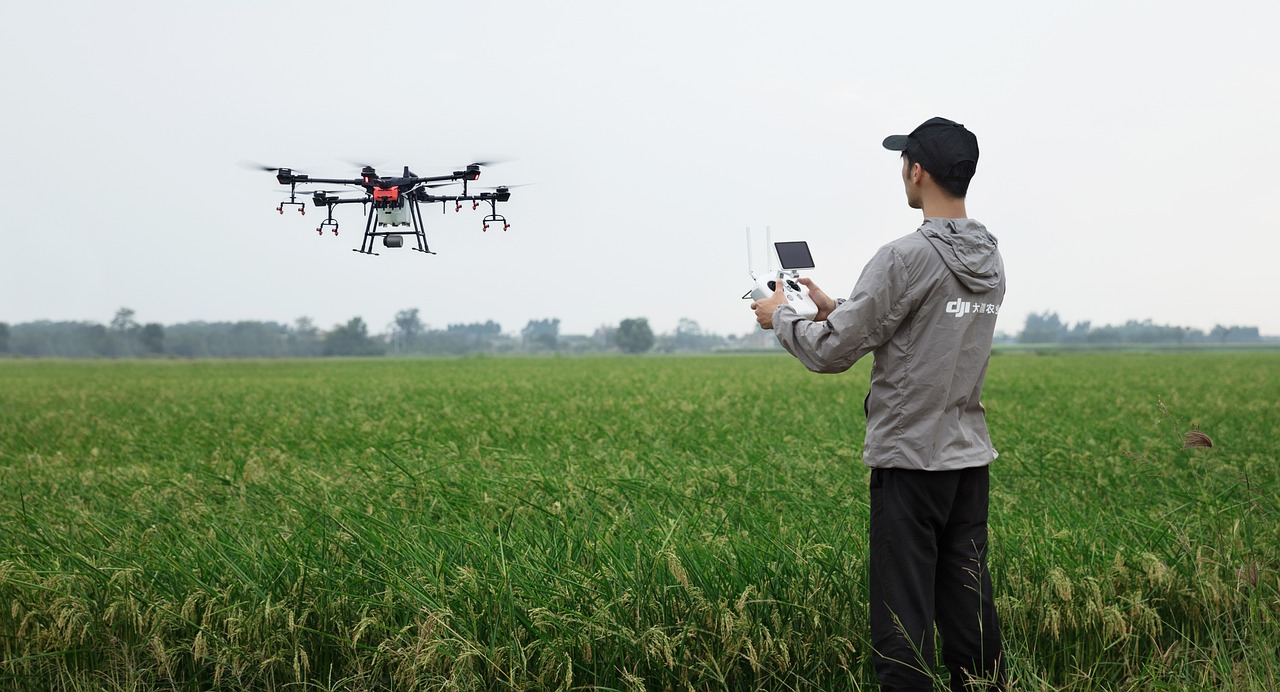
Mapping and Assessment Tools
In the aftermath of a disaster, understanding the lay of the land is crucial for effective response efforts. This is where come into play, revolutionizing the way responders gather critical information. Drones equipped with advanced imaging technology can create detailed maps of affected areas, providing a bird's-eye view that is invaluable for planning and coordination. Imagine trying to navigate a maze blindfolded; that's what responders face without accurate maps. These tools help lift the blindfold, allowing for better situational awareness and resource allocation.
One of the standout features of these drones is their ability to generate high-resolution, georeferenced maps in real-time. This capability is essential for identifying the most severely impacted zones, assessing infrastructure damage, and determining where to send resources first. For example, a drone can fly over a disaster site and capture images that are then stitched together to form a comprehensive map. This map can highlight areas that are completely inaccessible due to debris or flooding, enabling teams to prioritize their efforts effectively.
Moreover, the integration of LiDAR (Light Detection and Ranging) technology allows for even more precise assessments. LiDAR can penetrate through vegetation and provide accurate topographical data, which is particularly useful in forested or mountainous regions. The data collected can be processed to create 3D models of the terrain, giving responders an unprecedented view of the disaster's impact. These models can help predict how the landscape might change over time, which is vital for planning evacuation routes and future recovery efforts.
To illustrate the significance of these mapping tools, consider the following table that summarizes the key benefits:
| Feature | Description | Benefits |
|---|---|---|
| Real-time Mapping | Generation of up-to-date maps during a disaster. | Improved situational awareness and faster decision-making. |
| LiDAR Technology | Utilizes laser pulses to measure distances. | Accurate terrain modeling and vegetation penetration. |
| Georeferencing | Mapping data is tied to geographic coordinates. | Facilitates easy navigation and resource allocation. |
In addition to these technologies, drones can also assist in monitoring changes over time. For instance, by conducting follow-up flights, responders can assess the effectiveness of their recovery efforts and adapt their strategies accordingly. This ongoing assessment is akin to having a live scoreboard during a game, allowing teams to see what’s working and what isn’t in real-time.
In conclusion, the integration of mapping and assessment tools in disaster response not only enhances operational efficiency but also significantly increases the chances of saving lives. By providing responders with the information they need when they need it, these technologies are transforming the landscape of emergency management.
- How do drones improve disaster mapping? Drones provide real-time aerial imagery and can create detailed maps, allowing responders to assess damage and plan effectively.
- What is LiDAR technology? LiDAR is a remote sensing method that uses laser pulses to measure distances, providing accurate topographical data.
- Can drones operate in adverse weather conditions? While drones have limitations in severe weather, many are designed to withstand light rain and wind, making them versatile tools for disaster response.
- How fast can drones generate maps? Depending on the area size and drone capabilities, maps can be generated in real-time or within a few hours after data collection.
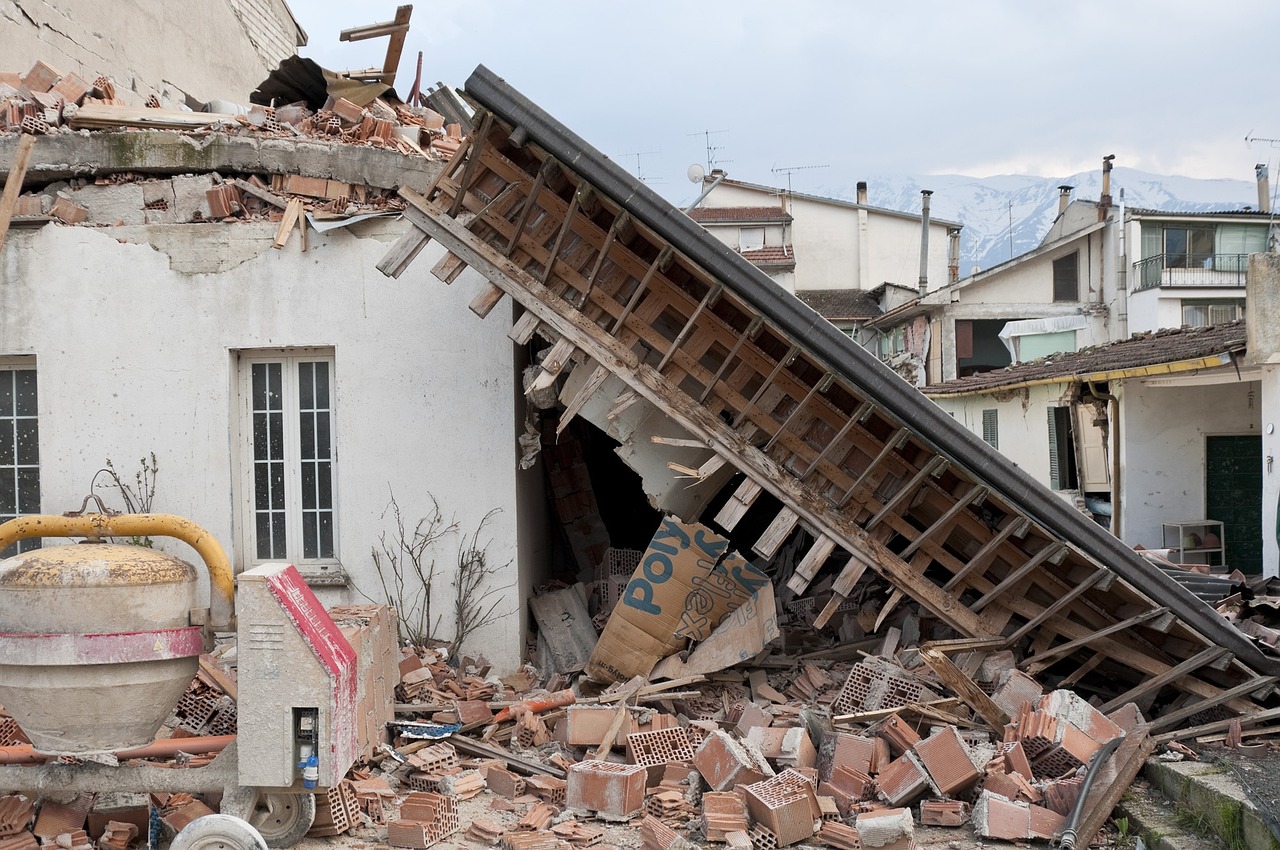
Ground Robots for Hazardous Environments
When it comes to disaster response, ground robots are like the unsung heroes of the operation. These machines are designed to tackle the most challenging environments, where human responders might hesitate to tread. Imagine a scene where a building has collapsed, and there are concerns about structural integrity or hazardous materials. This is where ground robots come into play, equipped with advanced sensors and mobility systems that allow them to navigate through debris and assess situations without putting lives at risk.
One of the standout features of ground robots is their ability to navigate hazardous terrains. Whether it’s a crumbled building, a flooded area, or a site contaminated with hazardous materials, these robots can maneuver through obstacles that would be dangerous for humans. They often come equipped with specialized wheels or tracks, allowing them to traverse uneven surfaces and tight spaces. This capability significantly increases the efficiency of search and rescue operations, as they can reach areas that might otherwise be inaccessible.
Moreover, ground robots are equipped with a variety of sensors that allow them to assess structural integrity. For instance, they can use radar technology to detect voids in collapsed structures, helping rescuers understand where survivors might be trapped. Additionally, they can analyze the surrounding environment for hazardous gases or radiation, providing crucial data that informs the safety protocols for human responders. This real-time data collection is vital, as it enables teams to make informed decisions quickly, potentially saving lives.
Another impressive aspect of these robots is their ability to deliver supplies. In situations where human access is limited, ground robots can transport essential items such as food, water, or medical supplies to those in need. This capability not only enhances the effectiveness of the response but also ensures that resources are allocated efficiently. Imagine a scenario where a robot is delivering a first aid kit to an injured person trapped in rubble while human responders are still making their way through the debris – it’s a game-changer!
However, deploying ground robots is not without its challenges. The technology must be reliable and adaptable to various environments, and there’s always the concern of maintaining communication between the robot and the operators. Despite these hurdles, the benefits of using ground robots in hazardous environments are undeniable. They provide a layer of safety for human responders and significantly improve the overall effectiveness of disaster response strategies.
In conclusion, ground robots are revolutionizing the way we approach disaster response. Their ability to navigate hazardous environments, assess structural integrity, and deliver essential supplies makes them invaluable assets in emergency situations. As technology continues to advance, we can expect these robots to become even more integrated into our disaster response strategies, ultimately leading to more efficient and safer operations.
- What types of ground robots are commonly used in disaster response?
There are various types of ground robots, including wheeled robots, tracked robots, and amphibious robots, each designed for specific environments and tasks. - How do ground robots communicate with human responders?
Ground robots typically use wireless communication systems, allowing operators to control them remotely and receive real-time data. - Can ground robots operate in extreme weather conditions?
Many ground robots are designed to withstand harsh weather, but their effectiveness can vary based on the specific environmental challenges. - Are ground robots equipped with cameras?
Yes, most ground robots come equipped with cameras and other sensors to provide visual feedback and data to human operators.

Challenges in Implementing Robotics
While the integration of robotics into disaster response strategies holds immense promise, it is not without its challenges. These obstacles can significantly affect the effectiveness and efficiency of robotic deployment during critical situations. One major hurdle is the technical limitations that many robotic systems face. For instance, battery life is often a concern; robots may not have enough power to operate for extended periods in the field, particularly in remote or hard-to-reach areas. Additionally, communication issues can arise, especially in environments where traditional signals are disrupted due to debris or natural barriers. This can lead to a lack of real-time data transfer, which is crucial for effective decision-making during emergencies.
Moreover, the environmental adaptability of robots is another significant challenge. Many robots are designed for specific tasks and may struggle to navigate unpredictable terrains, such as those found in disaster zones. For example, a ground robot may perform well on flat surfaces but could become immobilized in rubble or mud. This limitation can hinder their ability to carry out essential functions, such as delivering supplies or conducting assessments.
In addition to technical challenges, there are also regulatory and ethical considerations that must be addressed. The use of robotics in disaster response raises various legal and ethical questions. For instance, privacy concerns arise when drones are deployed in populated areas, as they may inadvertently capture sensitive information. Furthermore, there are liability issues that need to be clarified; if a robot fails during a mission, who is responsible for the consequences? To mitigate these concerns, it is essential to establish clear operational guidelines that govern the use of robotic technologies in emergency situations.
Another critical aspect of implementing robotics in disaster response is the need for human-robot collaboration. While robots can perform many tasks autonomously, they still require human oversight and intervention. This collaboration can be challenging, as it necessitates effective communication and trust between human responders and robotic systems. Training programs that focus on how to work alongside robots can help bridge this gap, but they require time and resources that may not always be available in the chaos of a disaster.
In summary, while robotics has the potential to revolutionize disaster response, addressing these challenges is crucial for their successful implementation. By overcoming technical limitations, navigating regulatory landscapes, and fostering human-robot collaboration, we can better harness the power of robotics to save lives and improve emergency management outcomes.
- What are the main technical challenges faced by robotics in disaster response?
The primary technical challenges include battery life, communication issues, and environmental adaptability, which can hinder robot performance in disaster scenarios. - How do regulatory issues affect the use of robots in emergencies?
Regulatory issues encompass privacy concerns, liability questions, and the need for clear operational guidelines, which must be addressed to ensure ethical robot deployment. - What role does human-robot collaboration play in disaster response?
Human-robot collaboration is essential for effective disaster response, as it allows for better decision-making and execution of tasks, but it requires training and trust between responders and robots.

Technical Limitations
The integration of robotics into disaster response strategies is undoubtedly revolutionary, but it doesn't come without its fair share of . One of the most pressing issues is battery life. Robots deployed in disaster zones often need to operate for extended periods, and a short battery life can severely limit their operational capabilities. Imagine sending a drone to survey a disaster area only for it to run out of power mid-flight, leaving critical areas unscanned and victims potentially undiscovered. This issue underscores the need for advancements in battery technology to ensure that robots can sustain longer missions without frequent recharging.
Another significant challenge is communication issues. In chaotic environments, such as those following natural disasters, maintaining a reliable communication link between robots and human operators can be problematic. Signal interference from debris, damaged infrastructure, and even environmental factors like weather can disrupt communication, rendering robots less effective. The inability to receive real-time commands or transmit vital data can hinder rescue operations, leading to delays that may cost lives.
Furthermore, environmental adaptability poses a challenge. Robots are often designed for specific tasks and environments, which means they may struggle in unpredictable and hazardous conditions. For example, a ground robot that effectively navigates urban debris might not perform well in a flooded area. This lack of versatility can limit the range of scenarios in which robots can be deployed, necessitating the development of more adaptable systems capable of handling various disaster conditions.
In addition to these challenges, the integration of robotics with existing emergency protocols can be cumbersome. Emergency responders are trained to work with specific tools and methods, and introducing robotic systems requires additional training and adjustments to established procedures. This can lead to a temporary decrease in operational efficiency as teams learn to incorporate robots into their workflows.
Despite these limitations, the potential benefits of robotic technology in disaster response are immense. To overcome these challenges, ongoing research and development are crucial. As technology evolves, we can expect improvements in battery efficiency, communication systems, and the versatility of robotic systems, paving the way for more effective disaster response operations.
- What are the main technical limitations of robots in disaster response?
The primary technical limitations include battery life, communication issues, environmental adaptability, and integration with existing emergency protocols.
- How can battery life be improved for disaster response robots?
Advancements in battery technology, such as higher capacity batteries and alternative energy sources, are essential for extending operational time.
- What is the impact of communication issues on robotic operations?
Communication disruptions can hinder real-time data transmission and command execution, making robots less effective in critical situations.
- Why is environmental adaptability important for disaster response robots?
Robots need to navigate various unpredictable conditions, such as debris, flooding, or unstable structures, to be effective in diverse disaster scenarios.
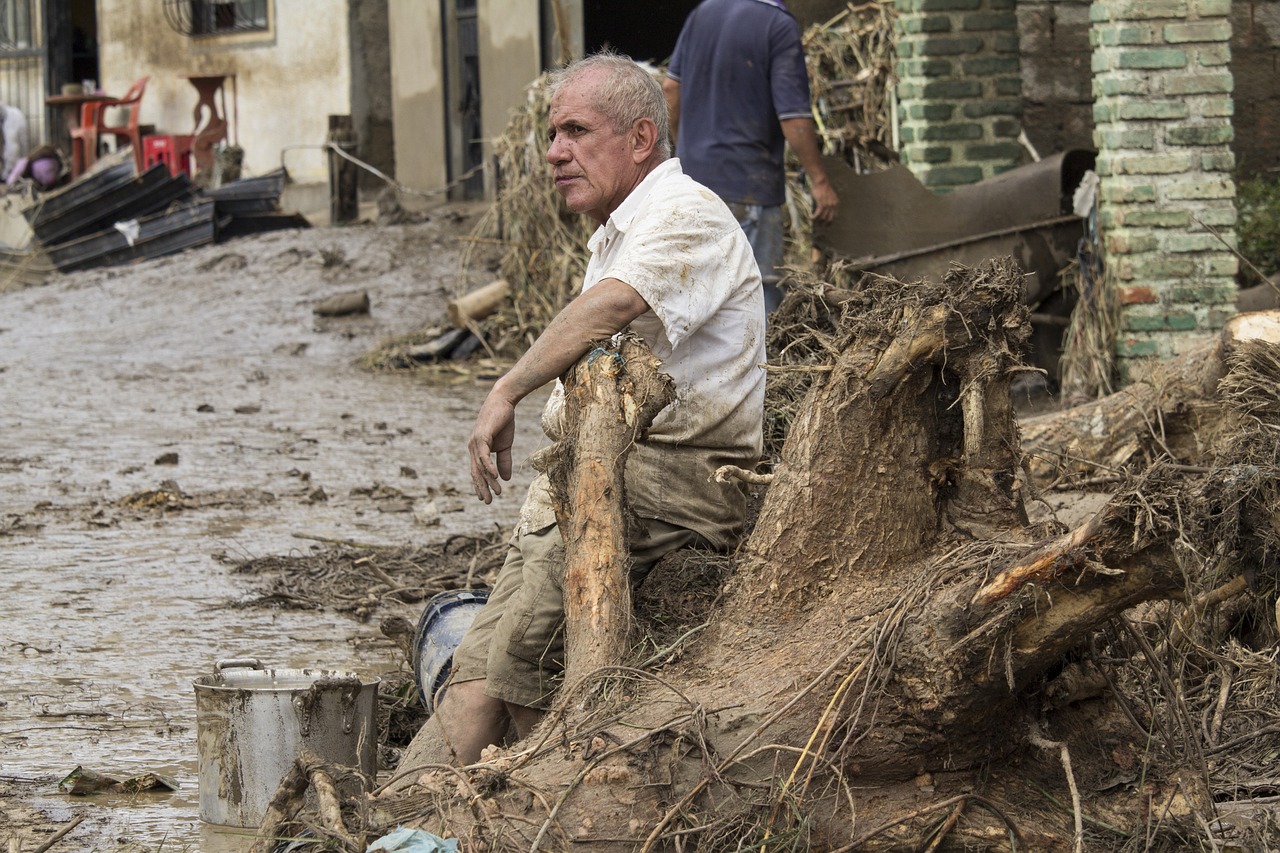
Regulatory and Ethical Considerations
As we embrace the incredible potential of robotics in disaster response, we must also navigate a complex landscape of . These challenges are not just bureaucratic hurdles; they touch on the very essence of how we value human life and privacy in crisis situations. Imagine a scenario where a robot is deployed to save lives, yet its actions raise questions about accountability and consent. This paradox highlights the need for clear operational guidelines that ensure the responsible use of technology.
One of the critical regulatory concerns involves privacy issues. Drones equipped with advanced imaging capabilities can gather vast amounts of data, including personal information about individuals in disaster-stricken areas. While this data can be invaluable for search and rescue operations, it also poses a significant risk of infringing on individual privacy rights. How do we balance the need for information with the right to privacy? Establishing strict data protection policies is essential to safeguard the rights of those affected by disasters.
Moreover, there are liability issues that arise when robots are involved in emergency situations. If a drone malfunctions and causes harm, who is held accountable? Is it the manufacturer, the operator, or the agency that deployed the robot? These questions necessitate comprehensive legal frameworks that address liability in robotic operations. Without such frameworks, the integration of robots in disaster response could be stunted by fears of litigation and blame.
In addition to these legal concerns, ethical implications must also be considered. For instance, the deployment of robots in disaster scenarios raises questions about human dignity. When we rely on machines to perform tasks traditionally handled by humans, such as search and rescue, do we risk desensitizing ourselves to the value of human life? It is crucial to foster a dialogue around these ethical dilemmas to ensure that technology serves to enhance human efforts rather than replace them.
To address these challenges, a collaborative approach involving policymakers, technologists, and ethicists is necessary. By working together, we can develop guidelines that not only promote the effective use of robotics in disaster response but also protect individual rights and uphold ethical standards. This collaboration could lead to the establishment of a regulatory body dedicated to overseeing the use of robotics in emergency situations, ensuring that all stakeholders are held accountable and that the technology is used responsibly.
In conclusion, while the integration of robotics into disaster response offers remarkable opportunities, we must remain vigilant about the regulatory and ethical challenges that accompany these advancements. By proactively addressing these issues, we can harness the full potential of robotics while ensuring that we respect and protect the rights of individuals in times of crisis.
- What are the main ethical concerns regarding the use of robotics in disaster response? Ethical concerns primarily revolve around privacy, human dignity, and accountability.
- How can we ensure privacy when using drones in disaster scenarios? Implementing strict data protection policies and guidelines can help safeguard individual privacy rights.
- Who is liable if a robot causes harm during a disaster response? Liability can be complex and may involve the manufacturer, operator, or deploying agency, necessitating clear legal frameworks.
- What role do policymakers play in regulating robotics in disaster response? Policymakers are crucial in developing guidelines that ensure responsible use of robotics while protecting individual rights.
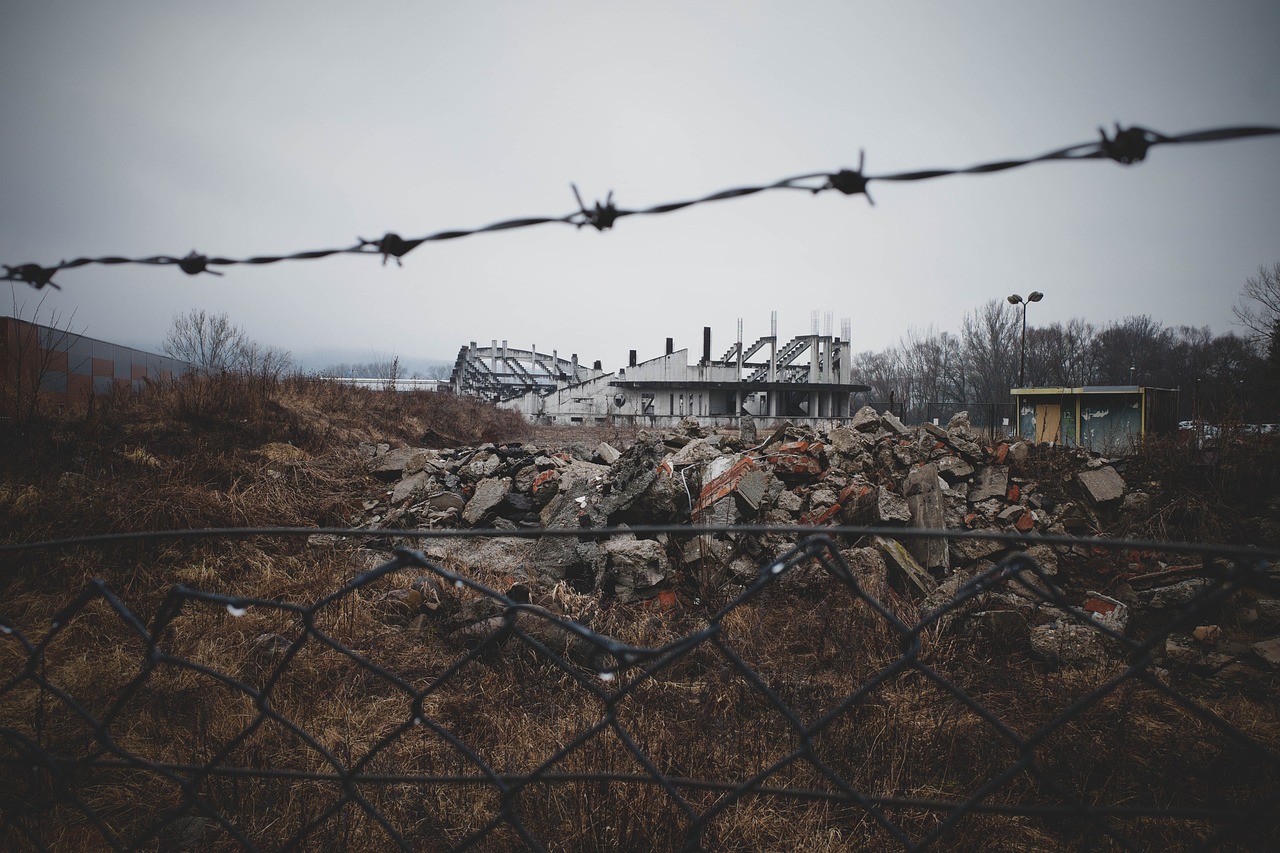
The Future of Robotics in Disaster Management
The future of robotics in disaster management is not just a fleeting trend; it's a revolutionary shift poised to redefine how we respond to emergencies. Imagine a world where robots seamlessly integrate into our rescue teams, working hand-in-hand with human responders to save lives and restore order. This vision is becoming increasingly tangible, thanks to rapid advancements in technology. As we look ahead, several key areas promise to enhance the capabilities of robotic systems in disaster scenarios.
One of the most exciting developments on the horizon is the integration of artificial intelligence (AI) and machine learning into robotic systems. These technologies will enable robots to analyze vast amounts of data in real-time, making informed decisions that enhance their operational efficiency. For instance, AI-powered drones could autonomously navigate through disaster zones, identifying the safest routes for rescue operations while assessing the structural integrity of buildings. This level of intelligence could significantly reduce response times and improve the accuracy of search and rescue missions.
Moreover, the future holds great promise for collaborative robotics, or cobots, which are designed to work alongside human responders. Unlike traditional robots that operate independently, cobots can assist in various tasks, from carrying heavy equipment to providing real-time data analysis. This collaboration can enhance safety on the ground, allowing human responders to focus on critical decision-making while robots handle the physically demanding tasks. Picture a disaster site where a human rescuer is directing operations, while a cobot efficiently moves debris or delivers medical supplies to those in need. This synergy not only boosts efficiency but also fosters a safer working environment.
As we continue to innovate, the implementation of swarm robotics is another fascinating avenue to explore. Swarm robotics involves deploying multiple robots that can communicate and coordinate with each other, mimicking the behavior of social insects like bees or ants. In a disaster scenario, a swarm of drones could cover large areas quickly, conducting aerial surveys, locating victims, and even delivering essential supplies. This collective approach can vastly improve situational awareness and resource allocation, ensuring that help arrives where it’s needed most.
However, as we embrace these advancements, we must also consider the challenges that accompany them. The integration of robotics into disaster management raises important ethical and regulatory questions. For example, who is liable if a robot fails during a rescue operation? What measures are in place to protect the privacy of individuals in disaster zones? Addressing these concerns will be crucial to ensure that the benefits of robotics are realized without compromising safety or ethical standards.
In conclusion, the future of robotics in disaster management is bright and full of potential. As technology continues to advance, we can expect to see robots playing an increasingly vital role in our emergency response strategies. With AI integration, collaborative robotics, and swarm technology on the rise, we are moving towards a future where robots and humans work together seamlessly to tackle the challenges posed by disasters. The question is not if robots will change disaster management, but rather how quickly we can adapt to these changes and harness their full potential.
- How will AI improve disaster response? AI can analyze data quickly, enabling robots to make informed decisions during emergencies.
- What are cobots? Cobots are collaborative robots designed to assist human responders in various tasks, enhancing efficiency and safety.
- What is swarm robotics? Swarm robotics involves multiple robots working together to cover large areas, improving search and rescue operations.
- What are the ethical concerns regarding robotics in disaster management? Ethical concerns include liability issues and privacy protection for individuals in disaster zones.
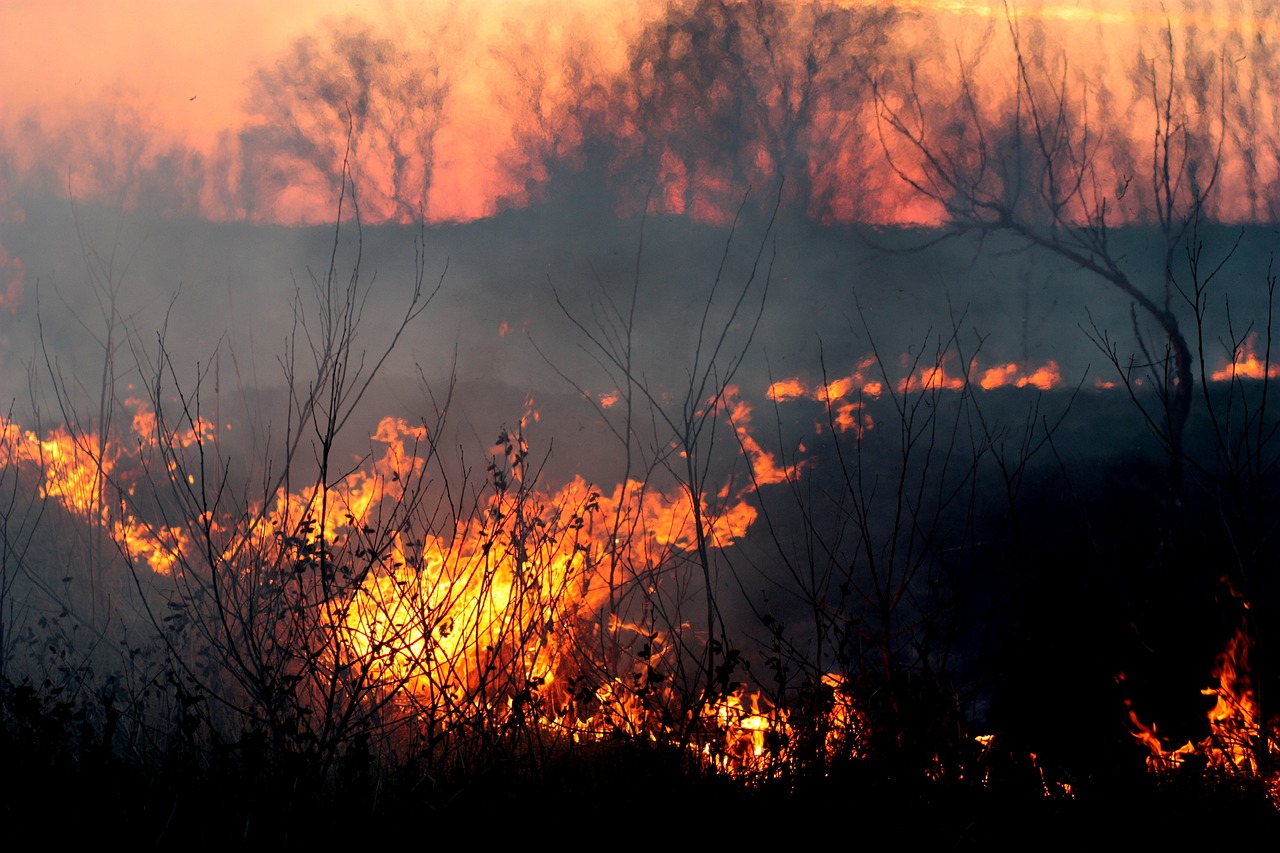
AI and Machine Learning Integration
The integration of Artificial Intelligence (AI) and Machine Learning (ML) into robotics is revolutionizing disaster response strategies. Imagine a world where robots are not just programmed to perform tasks but can learn from their environments and adapt in real-time. This is no longer science fiction; it's happening now. AI and ML enable robots to analyze vast amounts of data swiftly, helping responders make informed decisions during critical moments.
For instance, consider a disaster scenario where a building has collapsed. Traditional methods of searching for survivors can be time-consuming and risky. However, with AI-powered robots, the situation changes dramatically. These robots can utilize advanced algorithms to process sensory data, identifying patterns that indicate the presence of life beneath the rubble. This capability not only speeds up the rescue process but also enhances the safety of human responders, who can focus on the most promising areas first.
Moreover, AI can significantly improve the effectiveness of resource allocation. By analyzing data from various sources—such as social media updates, satellite imagery, and sensor readings—AI systems can predict where help is needed most urgently. This predictive analysis allows emergency management teams to deploy their resources more effectively, ensuring that aid reaches those in dire need without unnecessary delays.
Another exciting aspect of AI integration is the ability to enhance communication between different robotic systems. Imagine drones and ground robots working in tandem, sharing information in real-time. Drones can scout an area, providing aerial views and data that ground robots can use to navigate challenging terrains. This collaborative approach not only maximizes efficiency but also minimizes the risks to human life.
However, it's essential to acknowledge that integrating AI and ML into disaster response comes with its challenges. The technology must be robust enough to function in unpredictable environments, and there's always the question of data privacy and security. As robots collect and analyze data, ensuring that this information is protected from malicious entities is crucial. Additionally, as AI systems become more autonomous, we must address the ethical implications of their decision-making processes in life-and-death situations.
In conclusion, the integration of AI and machine learning into robotics holds immense potential for enhancing disaster response strategies. By enabling robots to learn and adapt, we can significantly improve the speed and effectiveness of rescue operations. As we continue to innovate and refine these technologies, the future of disaster management looks not only promising but also profoundly transformative.
- What role does AI play in disaster response? AI enhances decision-making and resource allocation by analyzing large datasets to predict needs and optimize operations.
- How do robots learn in disaster scenarios? Robots use machine learning algorithms to adapt to their environments, learning from previous experiences and data inputs.
- Are there ethical concerns with using AI in emergencies? Yes, issues such as data privacy, security, and the ethical implications of autonomous decision-making must be addressed.
- Can AI improve collaboration between different types of robots? Absolutely! AI enables seamless communication and coordination between drones, ground robots, and other systems, enhancing overall effectiveness.
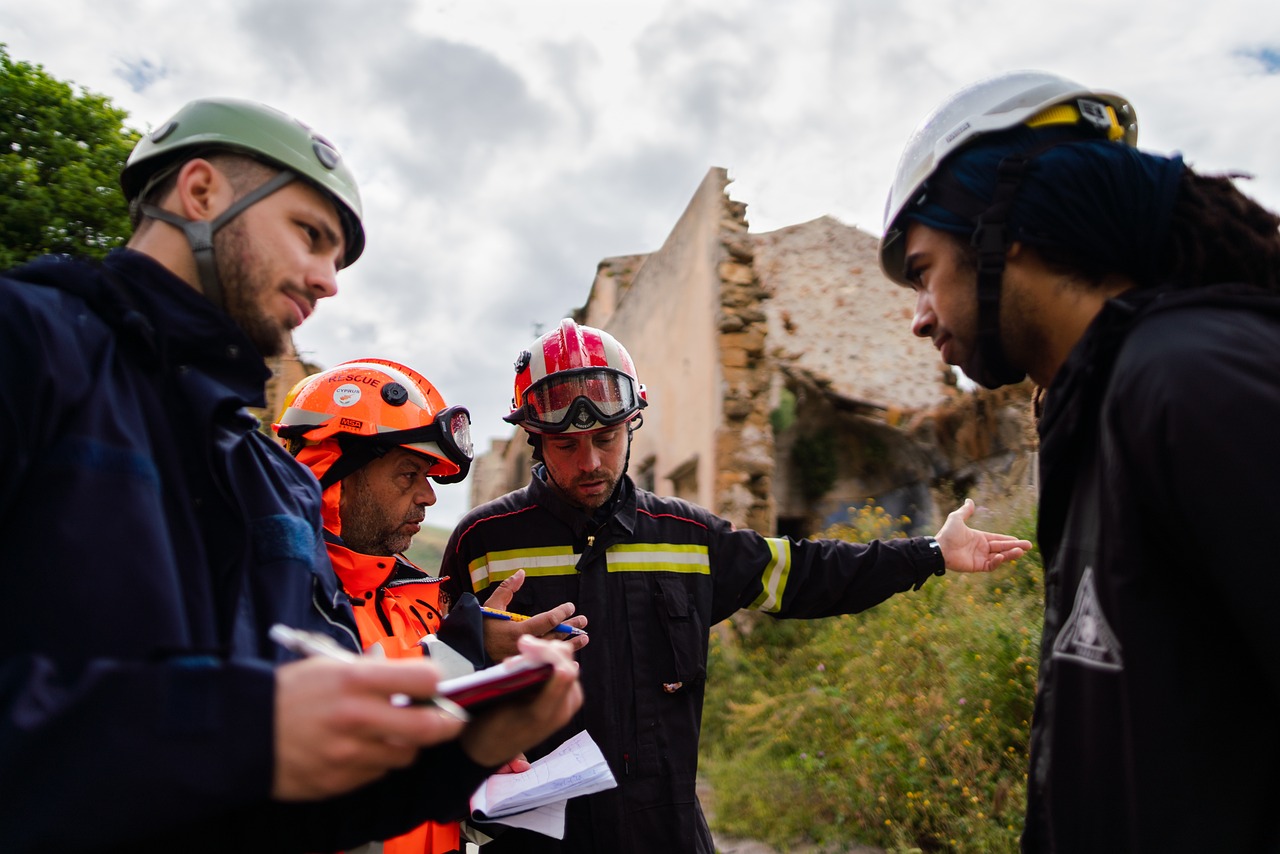
Collaborative Robotics
Imagine a scene where humans and robots work hand in hand, each complementing the other's strengths. This is the essence of , or cobots, which are designed to assist human responders in disaster management efforts. The integration of cobots into disaster response strategies is not just a futuristic dream; it's becoming a reality. These intelligent machines can enhance safety, efficiency, and overall effectiveness in chaotic environments, making them invaluable assets during crises.
One of the most significant advantages of collaborative robotics is their ability to operate in hazardous conditions where human responders may be at risk. For example, during a building collapse, a cobot can navigate through debris and assess structural integrity without putting a human life in jeopardy. This capability allows for quicker evaluations of dangerous situations, enabling emergency teams to make informed decisions faster. Furthermore, cobots can be equipped with various tools and sensors, allowing them to perform tasks such as delivering supplies, conducting reconnaissance, and even providing medical assistance.
Another fascinating aspect of cobots is their adaptive learning capabilities. With advancements in artificial intelligence, these robots can learn from their interactions with humans and their environment. This means that as they work alongside responders, they can improve their performance and become even more effective over time. For instance, a cobot might learn the most efficient routes through a disaster zone, optimizing its delivery of crucial supplies like food, water, or medical kits.
Moreover, the emotional aspect of human-robot collaboration cannot be overlooked. In high-stress situations, the presence of a cobot can provide reassurance to human responders. Imagine a firefighter working alongside a robot that not only assists with heavy lifting but also communicates real-time data about the environment. This partnership can significantly reduce stress levels, allowing responders to focus on their tasks with greater clarity and confidence.
However, the successful implementation of collaborative robotics in disaster response is not without its challenges. Issues such as training and integration into existing emergency protocols must be addressed. Emergency responders need to be adequately trained to work with cobots, understanding their capabilities and limitations. Additionally, clear operational guidelines must be established to ensure that humans and robots can work together seamlessly without confusion or conflict.
In summary, collaborative robotics hold immense potential for revolutionizing disaster response strategies. By leveraging the strengths of both humans and machines, we can create a more efficient, safe, and effective response framework. As technology continues to advance, the synergy between human responders and collaborative robots will likely become a cornerstone of emergency management, ultimately saving more lives and minimizing the impact of disasters.
- What are collaborative robots? Collaborative robots, or cobots, are designed to work alongside humans, enhancing their capabilities and improving safety in various tasks.
- How do cobots improve disaster response? Cobots can operate in hazardous environments, assist in logistics, and provide real-time data, allowing human responders to focus on critical tasks while ensuring their safety.
- What challenges exist in implementing cobots? Challenges include the need for training responders, integrating cobots into existing protocols, and establishing clear operational guidelines.
- Will cobots replace human responders? No, cobots are designed to assist humans, not replace them. The goal is to create a collaborative environment where both can work together effectively.
Frequently Asked Questions
- How have robotics evolved in disaster response?
Robotics have come a long way in disaster response, transitioning from simple remote-controlled devices to sophisticated systems equipped with advanced technologies. Initially, robots were used primarily for reconnaissance, but now they play vital roles in search and rescue, damage assessment, and even delivering supplies. This evolution reflects a growing recognition of the potential for robotics to enhance the efficiency and effectiveness of emergency management.
- What types of robots are commonly used in disaster scenarios?
Various types of robots are employed in disaster scenarios, including drones, ground robots, and underwater vehicles. Drones are particularly effective for aerial surveillance and rapid deployment, while ground robots can navigate hazardous environments to assess structural integrity and deliver supplies. Underwater vehicles are crucial for scenarios involving floods or submerged areas, enabling search efforts where human responders cannot go.
- What advantages do drones provide in search and rescue operations?
Drones offer several advantages in search and rescue operations, such as aerial surveillance, which allows responders to cover large areas quickly. They also facilitate real-time data collection, providing crucial information that can guide rescue efforts. Additionally, drones can be deployed rapidly, reaching disaster sites faster than traditional methods, which can be lifesaving in critical situations.
- What challenges do we face when implementing robotic technologies in disaster response?
Implementing robotic technologies in disaster response is not without its challenges. Technical limitations, such as battery life and communication issues, can hinder operational efficiency. Furthermore, regulatory hurdles and ethical considerations, including privacy concerns and liability issues, need to be addressed to ensure safe and effective use of these technologies in real-world scenarios.
- How can AI and machine learning improve robotics in disaster management?
AI and machine learning can significantly enhance the capabilities of robots in disaster management. By integrating these technologies, robots can make smarter decisions based on real-time data, improving their operational efficiency. For example, AI can help drones identify potential hazards or locate survivors more effectively, allowing for quicker and more targeted responses during emergencies.
- What is collaborative robotics, and how does it benefit disaster response?
Collaborative robotics, or cobots, are designed to work alongside human responders, enhancing safety and efficiency in disaster response efforts. By sharing tasks and responsibilities, cobots can assist in heavy lifting, data collection, and even direct interaction with victims, allowing human responders to focus on critical decision-making and care. This collaboration ultimately leads to more effective disaster management strategies.











